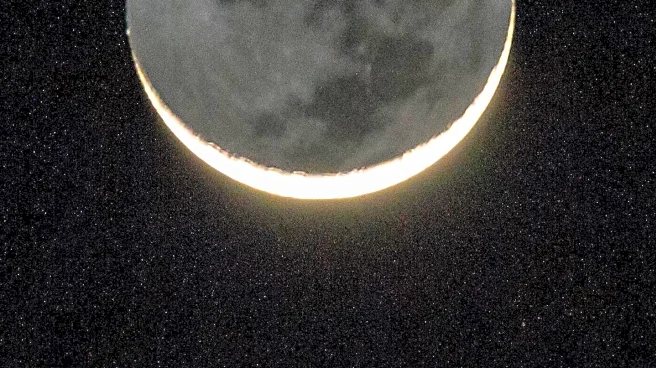What's Happening?
On September 14, the Last Quarter Moon will pass near the star Elnath, located at the tip of Taurus' horn. This celestial event will be visible in the early morning sky, with the Moon appearing 47% illuminated. For some observers in the southern and southwestern United States, as well as in Mexico and Central America, the Moon will cover Elnath in an occultation. The timing of this event varies significantly depending on the observer's location. For instance, in Albuquerque, New Mexico, the star will disappear from view just before 5:50 A.M. MDT. The International Occultation Timing Association provides specific timing predictions for this event.
Why It's Important?
This astronomical event is significant for both amateur and professional astronomers as it provides an opportunity to observe a lunar occultation, where the Moon passes in front of a star. Such events are valuable for scientific observations and can help refine our understanding of the Moon's orbit and the star's position. For the general public, it offers a chance to engage with astronomy and appreciate the dynamics of celestial bodies. The event's visibility across a wide geographic area, including parts of the U.S., Mexico, and Central America, makes it accessible to a large audience.
What's Next?
Observers interested in witnessing the occultation should check the specific timing for their location, as it varies widely. The International Occultation Timing Association's website provides detailed information on when and where the occultation will be visible. For those unable to view this event, the next significant meteor shower, the Orionids, is expected in late October, offering another opportunity for skywatching.
Beyond the Headlines
Lunar occultations like this one can have broader implications for astronomical research. They allow scientists to study the Moon's topography and refine models of its orbit. Additionally, these events can inspire public interest in astronomy, potentially encouraging educational initiatives and fostering a greater appreciation for space science.

